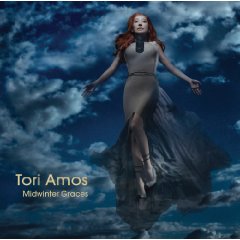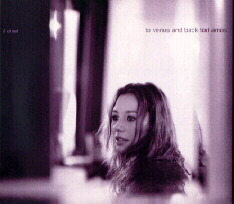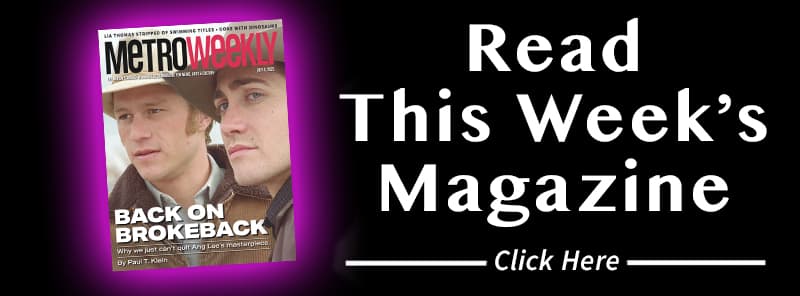Tori Amos turns 50 – her albums ranked from worst to first
Happy Birthday to local DC-area product Tori Amos, who turns 50 today. A young piano prodigy, she started off by playing in bars around the D.C. area. She eventually worked her way up to getting a major label deal and in 1992 released the album “Little Earthquakes,” which launched a remarkable career that continues to thrive. The size and devotion of her fan base is legendary, and she’s had a tremendous amount of influence and success over the last quarter-century. She’s sold millions of albums world-wide, has toured extensively and successfully all over the world, and has enjoyed tremendous success with a string of critically hailed albums. Seven of Tori’s albums have reached the top-ten on the Billboard Albums Chart – something very few female artists can boast. Tori Amos doesn’t always seem to get the acknowledgement that she deserves in the press and by critics for her overall career, and hopefully that will change. The results speak for themselves. Very few middle-aged solo female artists not named Madonna have the kind of following and success that Tori Amos continues to enjoy. She’s a bit of an outsider in the music industry – she writes and produces her music at her own studio largely by herself and with an inner circle of musicians that have been with her for years, she doesn’t fit neatly into any musical category or genre, and she barely gets any radio support at all – yet she just keeps on doing her own thing, and going strong.
In celebration of her milestone 50th birthday, we examine her impressive back catalog of work, and rank them from “worst to first” (excluding live albums and compilations like “Tales of a Librarian” and “Gold Dust”). Of course such rankings are subjective, and you are welcome to create your own list and post them in the comments section below. Happy Birthday Tori, and here’s to many more to come!
13. “Y Kan’t Tori Read” – 1988
Key tracks: “Cool on Your Island,” “Etienne”, “The Big Picture”, “Fire on the Side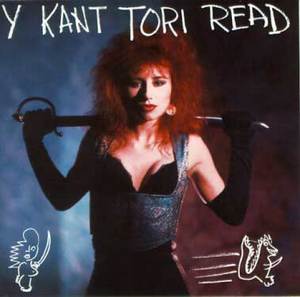 ”
”
I hesitate to include this because it’s not, strictly speaking, a Tori Amos solo album. “Y Kan’t Tori Read” was the name of the band, featuring Kim Bullard, guitarist Steve Caton (who’d remain a collaborator on Tori’s early solo albums), and future Guns N’ Roses and Velvet Revolver drummer Matt Sorum. This is one of those rare situations where an album’s failure is the best thing that could have happened for an artist. There are no cheesy ‘80s clichés left unexplored on this album. Rock tracks that veer dangerously close to hair-metal territory, power ballads, dated production, waves of synthesizers, overwrought vocals – it’s almost like the perfect time capsule for bad ‘80s music. Mostly. There are a few promising moments, and in particular “Cool On Your Island” has a great deal of charm. Tori seems to alternate between embarrassment and bemusement when “Y Kan’t Tori Read” has come up in interviews over the years, and of course the album sounds absolutely nothing like anything else she’s recorded since. It’s been out of print for years (original copies can bring a hefty price tag on eBay) and she’s never bothered to reissue it – likely knowing that it’s been so heavily bootlegged that anybody who is a die-hard enough fan to want the album already owns it in some form. The only real reason to acquire it is for the novelty factor of hearing Tori Amos perform trashy ‘80s pop. That said, Tori has performed a few of the tracks live from time to time over the years – she’s done beautiful solo performances of “Etienne” and “Cool on Your Island” and she even did “On the Boundary” a few years back (one can only hope she’ll consider adding “Pirates” to a set-list in the near future. OK, not really…) “Y Kan’t Tori Read” is the portrait of a young artist trying to find her way in an intimidating industry, and discovering the hard way what path NOT to take. “Y Kan’t Tori Read” was, of course, a massive and utter flop, but had it been successful (fat chance of that) she might have continued down this ill-advised path, and we’d never have had “Little Earthquakes” only a few years later. Oh, and one final note – a YouTube search for the video to the album’s first single, “The Big Picture,” is guaranteed to lead to hilarity. Seek it out. Ahhh, those glories of the ‘80s.
12. “Midwinter Graces” – 2009
Key tracks: “A Silent Night With You,” “Winter’s Carol”, “Our New Year”, “Snow Angel”
Tori’s seasonal album “Midwinter Graces” was her second full-length release of 2009, following “Abnormally Attracted to Sin” earlier in the year. It’s a collection of original compositions and reinventions of classic seasonal tunes. One of the best tracks is “Star of Wonder,” which incorporates the holiday standard “We Three Kings” effectiveness. “Snow Angel” is sublimely beautiful ballad, and “Harps of Gold” is vibrant and joyous – a track that could be a holiday staple if given a chance. “Midwinter Graces” is a heartfelt and creative effort. When approached by Universal Records to do a seasonal album, she could have hopped over to her piano and lazily recorded a dozen standards in their traditional form, and probably would’ve sold more records. Instead, she created a warm and intimate album that is a true pleasure. Play it when the temperatures plunge, the snow is flying, and you’re inside with the fireplace roaring. But if it’s so good, why so low in the rankings? It’s hard to compare a seasonal album with more traditional recordings, and “Midwinter Graces” feels more like a side-project than a major release. Still, it has moments of supreme beauty – “A Silent Night With You,” “Winter’s Carol” and “Our New Year” are all fantastic. But seriously… what’s with that album cover art? It looks like a bad Photoshop job.
11. “Strange Little Girls” – 2001
Key tracks: “Strange Little Girl,” “Rattlesnakes,” “Time,” “New Age ”
”
Tori’s relationship with Atlantic Records had become increasingly troubled, and by the turn of the millennium she was eager to fulfill her contract. Like many artists do, she turned to a covers project – the ultimate contract filler. She chose 12 songs originally written and recorded by men and performed them from the perspective of 12 different female characters that she based on for each song. Some things work better than others, but there are some great moments. Album opener, a take on V.U’s “New Age,” is wonderfully unhinged. Her rendition of Lloyd Cole’s “Rattlesnakes,” performed on the Rhodes piano with a warmth that absolutely glows, should have been a single. Her ghostly reinvention of Eminem’s “’97 Bonnie & Clyde” – a track in which he murders his wife and, in an ongoing narrative with his young daughter in he car, throws her body in the trunk, and dumps her into the lake – is absolutely chilling, especially lines like “there goes mama, splashing in the water… no more fighting with dad, no more restraining order… no more step-dada, no more brother… blow her kisses bye-bye, tell mommy you love her…” sung in a haunting near-whisper over a dramatic string arrangement. It’s a striking moment of clarity, allowing the listener to feel the true impact of the words and meaning of Eminem’s song from beyond the victim’s watery grave. Her take on Tom Waits’ “Time” – which she memorably performed on the Letterman show in his first episode back after 9/11 – is spellbinding, as is her version of The Boomtown Rats’ “I Don’t Like Mondays,” which she turns from an new-wave oddity into a poignant ballad, once again featuring the glistening Rhodes. The production work sounds phenomenal throughout. “Strange Little Girls” is about as adventurous and good as it gets for a covers album, and ranking it this low seems wrong – but ultimately it can’t top any of her main albums of original material. Although it yielded no hits and only one single (the title track), “Strange Little Girls” did quite well upon its release, hitting #4 on the Billboard Album Charts, and earning Tori two Grammy nominations.
10. “The Beekeeper” – 2005
Key tracks: “Sleeps with Butterflies,” “Sweet the Sting,” “Cars and Guitars,” “The Power of Orange Knickers ”
”
Tori’s 2005 release “The Beekeeper” was a rather different experience than what fans of her ‘90s output had come to expect. Instead of a fiery, confessional young artist, Tori had grown into a more mature songwriter, covering a variety of styles and moods. Overall “The Beekeeper” is a rather warm and summery collection of mellowish pop songs, some of them achingly beautiful. It’s a band album, featuring Tori on her piano and Hammond organ, and her usual collaborators Matt Chamberlin on drums, Jon Evans on bass, and Mac Aladdin (widely assumed to be a pseudonym for her husband Mark Hawley) on guitar. First single “Sleeps with Butterflies” is a beautifully melodic track with a lovely piano and vocal arrangement. It’s a breath of fresh air. “Ribbons Undone,” her ode to her young daughter, may be syrupy, but given how Tori wrote with such anguish about her miscarriage on the “Choirgirl Hotel” album, it seems only natural now that she had a daughter that she’d reflect her new feelings in her work. By the time “The Beekeeper” came around she was a far different person than the young woman writing painful and cathartic albums like “Boys for Pele” and “From the Choirgirl Hotel.” Tori ventures into some swinging, soulful territory on a few songs, most notably the sexy strut of “Sweet the Sting” and “Witness.” The elegiac and touching “Toast,” about her late brother who had died in a tragic car accident, ends the album on a somber note. “The Beekeeper” is perhaps a bit overlong, and although it does contain some of her loveliest melodies (“Martha’s Foolish Ginger,” “Goodbye Pisces”), there are tracks that don’t feel fully developed, or lack the intensity to really make them work (“General Joy,” “Barons of Suburbia”) – and a few tracks are just dull (“Mother Revolution,” “Ireland”). Although it may be the weakest of her main albums of all original material, “The Beekeeper” still has enough plenty to offer.
9. “American Doll Posse” – 2007
Key tracks: “Big Wheel,” “Bouncing Off Clouds,” “Almost Rosey,” “Secret Spell”
Tori’s 2007 offering “American Doll Posse” was built around an interesting concept – she created 5 characters whom each represented a different aspect of her personality: Santa, Pip, Isobel, Clyde and Tori. Each character came complete with a back-story and a unique look, and each track credits the lead vocals to one of the “dolls”. She even performed each show on the excellent tour supporting the album as a different girl each night, and the audience never knew who they were gonna get. A fascinating idea that formalizes what is always true on a Tori Amos album (or any artist, for that matter) – that each song originates from a different place within the artist’s psyche. The album can, of course, be enjoyed without paying attention to the conceptual framework. “American Doll Posse” is largely a rock album – the guitar takes center stage here. Some tracks, like “Teenage Hustling” for instance, are straight-up glam-rock stompers. It doesn’t sound like any modern rock album, though – it’s more an ode to classic ‘70s-era rock. “American Doll Posse” is perhaps overlong and burdened with a handful of tracks that would have been better left as b-sides, but there is some exceptionally strong material. First single “Big Wheel” – with its thumping bass, rollicking piano and Tori’s memorable “I am an M.I.L.F., don’t you forget” chant – is sonically a direct descendent of Elton John’s “Honky Chateau” and “Madman Across the Water” albums. “Bouncing off Clouds” is one of the finest pop tracks of her career, with its spine-tingling bridge (“we could make this easy… make this easy… it’s not as heavy as it seems”). “Almost Rosey,” a piano-heavy mid-tempo rock ballad, is another highlight, as is the heavily rhythmic and sexual “Body and Soul”. “Secret Spell” is a strongly melodic piano-driven rocker that with any justice should have been a hit single. The best of several ballads is “Girl Disappearing,” a slow-burning epic with perhaps Tori’s finest vocal performance on the album, and a superb string arrangement. There is much to like about “American Doll Posse,” but one problem is the generally murky sound; perhaps for some future reissue it will be remixed. But minor quibbles aside, there are some classic Tori Amos tracks on this album, and it’s certainly worth diving into. “American Doll Posse” continued Tori’s string of Top 10 album debuts – it came in at #5 on the Billboard Album Charts and #2 on the Billboard Digital Download Charts.
8. “Night of Hunters” – 2011
Key tracks: “Carry,” “Nautical Twilight,” “Fearlessness,” “Edge of the Moon”
Tori’s 2011 project “Night of Hunters” was a major left-turn. Released on the small classical label Deutsche Grammophon, the album is a song-cycle about a woman on a dreamlike journey through a mystical past life as she tries to repair and renew her relationship. The tracks are all adaptations of classical pieces by the likes of Chopin, Debussy, Bach, Schubert and others, with Tori’s lyrics, melodies and piano interwoven with a full orchestral accompaniment. “Night of Hunters” is classical at its core, but the songs are not so far removed from Tori’s more conventional work that they couldn’t be performed without the orchestral arrangements – it’s a unique hybrid of two different worlds in music: pop and classical. It’s a stunningly beautiful album, and the strongest moments – like the epic “Fearlessness” – are as good as anything in her career. Other high points are the frantic and dramatic opener “Shattering Sea,” the epic nearly 10-minute “Star Whisperer,” and the album’s poignant finale “Carry.” There are several vocal appearances by her young daughter Tash, who plays a recurring character in the elaborate back-story that the album loosely follows. Her appearances are precious and work surprisingly well. It’s fascinating to think where “Night of Hunters” fits within Tori’s overall body of work. In the late ‘90s she was recording heart-wrenching tracks like “Spark” and “iieee” in which she bared her soul over her painful miscarriage; here, 13 years later, she is recording the exquisite “Snowblind,” a duet with her daughter that means far more than just another segment in a song cycle. It’s full circle from those ‘90s albums, a different universe entirely – and it’s wonderful to listen to it unfold. “Night of Hunters” is a fairy tale – complex, beautiful, hard to penetrate at first, but often magical. It holds a unique place in Tori’s catalog.
7. “Abnormally Attracted to Sin” – 2009
Key tracks: “Welcome to England,” “Maybe California,” “Curtain Call,” “Flavor”
“Abnormally Attracted to Sin,” released in May 2009, is arguably the most stylistically diverse and adventurous album of Tori’s career. The piano is prominent on stripped-down tracks like “Ophelia,” the melancholy and timely “Maybe California,” and the album’s haunting closer “Lady in Blue” which builds slowly to a powerful climax. She also returns to more electronic textures on tracks like “Give,” “Flavor,” and the excellent “Police Me.” “Fast Horse” is a melodic rocker with a great hook and a terrific blend of piano and guitar. “Strong Black Vine” is one of the album’s edgier rock tracks, and includes one of several compelling string arrangements by John Philip Shanale. Arguably the finest moment on the album is “Curtain Call,” a bitter and rather venomous indictment of the recording industry and its “chew ‘em up and spit ‘em out” ruthlessness, especially toward female artists. One strongly suspects that Tori is speaking from experience when, addressing a young and rising artist, she sneers out lyrics like “By the time you’re 25 they will say, ‘you’ve gone and blown it’. By the time you’re 35, I must confide, you will have blown them all.” Powerful stuff. The album is consistently strong, and although it’s as lengthy as “American Doll Posse” and “The Beekeeper,” in this case there are enough great tunes that it doesn’t overstay its welcome. The production sound on “Abnormally Attracted to Sin” is marvelous – an improvement over her prior two albums. Diverse in style yet cohesive as a whole, and loaded with excellent material, “Abnormally Attracted to Sin” proved to be Tori’s strongest work since “Scarlet’s Walk.” It was yet another Top 10 debut on the Billboard Album Charts, although it sadly faded from the rather quickly after the die-hard fans scooped up their copies. An album that is due for a reassessment and a fresh listen by those who may have missed it upon its release, “Abnormally Attracted to Sin” should not be overlooked. It’s a strong addition to Tori’s already amazing catalog of work.
6. “To Venus and Back” – 1999
Key tracks: “Bliss,” “1000 Oceans,” “Concertina,” “Suede”
Following the extensive tour supporting her 1998 album “From the Choirgirl Hotel,” Tori went into the studio to record a few new tracks to add to a planned live album. Inspiration struck and the “few tracks” ended up being a full album, “To Venus and Back.” It was sold as a 2-CD set – disc one a new studio album, disc two a collection of live tracks. The studio material continued the experimentations in electronic textures that she began on “Choirgirl.” “Venus” has a unique and timeless vibe – Tori and her production team were able to achieve a sound that really is like nothing else. It’s an ultimate head-trip – a swirl of effects, dense vocal arrangements, piano, synths and electronic beats. It opens with the motoric rocker “Bliss,” a killer track that is especially great when performed live. The harrowing “Juarez,” about the horrific unsolved murders of dozens of women in and around the city of Juarez, Mexico, with the ghostly repeated refrain of “no angels came…,” is particularly stunning. “Suede” is tense, mysterious and atmospheric, with layers of synths and guitar built over a ticking rhythm that sounds like the countdown of a bomb about to go off. “Concertina” is one of the catchiest pop singles of her career, and its layers of keyboards give it an almost new wave vibe. Album closer “1000 Oceans” is one of her more conventional ballads, yet it’s lovely and she sings it beautifully. There are no weak points on “To Venus and Back.” My only complaint is about what is missing – the lengthy, hypnotic “Zero Point” was recorded for the album but evidently couldn’t be finished in time for inclusion. A true shame – it’s fantastic. Tori even mentions in the liner notes that “it’s time will come”, and she spoke truly – “Zero Point” was eventually released as part of her box set “A Piano: The Collection” seven years later. Add it to the end of the first half of the album and it’s a perfect counterbalance to the equally lengthy “Datura,” and “To Venus and Back” is finally the album it was meant to be. As for disc two, the live tracks are handpicked gems that are all excellent – in particular that absolutely vicious hard-rocking take on “Sugar” and a gorgeous rendition of the widely-revered b-side “Cooling.” But it’s the studio disc that makes “Venus” a must-own. It’s a sonic universe to lose yourself in – trippy headphone music with layers of sounds that are absolutely enthralling 14 years after its release.
5. “Little Earthquakes” – 1992
Key tracks: “Silent All These Years,” “Crucify,” “Winter,” “Precious Things”
“Excuse me, but can I be you for a while? My dog won’t bite if you sit real still. I got the anti-Christ in the kitchen yelling at me again. Yeah, I can hear it.” The opening lines of “Silent All These Years,” the single that launched Tori Amos and set her remarkable career in motion. “Little Earthquakes” was a landmark album when it hit in 1992. It spoke to the disaffected – those who felt they had no voice of their own, or that if they did it could never be heard – and told them ‘you DO have a voice and you can use it.’ The imagery, emotional depth and song-craft on “Little Earthquakes” are incredibly powerful for such a young artist. “Precious Things” – – “so you can make me cum doesn’t make you Jesus” – – became an anthem for a generation of young women – and men – who had yet to discover enough self-worth to realize that being used sexually and emotionally and then being thrown away like a used cum-rag reflect not on them, but on the loser doing the throwing. Tori would take dead aim at those losers later… with a volcano named “Pele.” But “Little Earthquakes” is about a shared sense of worth, and discovering that there IS something of value in each of us. In “Leather,” she opens with “Look I’m standing naked before you – don’t you want more than my sex?” The album is essentially an awakening to the realization that sometimes the answer to that question is “NO.” Yeah, the production sounds a bit dated here and there, and maybe her voice isn’t as well-developed as it would be in a few years, and yeah, she would continue to grow and improve as a songwriter. Maybe from an analytical standpoint “Little Earthquakes” isn’t her finest album as an overall piece of work, but it’s undoubtedly her most vital. Her a cappella recounting of a violent rape in “Me And a Gun” is one of the bravest tracks of the last quarter-century. Seeing her perform it live in front of a raptly silent audience is an experience that will touch you to the core, if you are human. There are a number of classics on this album. “Winter” is a poignant ode to her father, and how years go by and dreams sometimes get placed on a shelf to gather dust – all too true. There’s “China,” a wrenching ballad about the slow realization that a relationship is broken beyond repair. There’s the extraordinary “Mother,” detailing those first hesitant moments of independence as, filled with trepidation, she unlocks the door and walks slowly away from the nest. There’s the wistful “Tear in Your Hand” – “I bet she’s pieces of me you’ve never seen” – a woman whose man has left her for another, but who is not broken by it. “Little Earthquakes” is full of such messages of affirmation, and what makes it work is that it so obviously comes from experience, and ongoing personal struggle. It’s an essential album of its time, and the album most closely associated with Tori Amos among the mainstream music press and the more casual fans. In some ways that’s a shame, because the constant focus on this record has overshadowed some of her other work, but it’s also a testament to the astonishing emotional power the album punches. “Little Earthquakes” is one of those rare albums that change not only the course of music – it caused an awakening – it’s an album that has inspired and changed lives. It galvanized the disaffected and misunderstood and the lonely who were touched by it into a community of fans and supporters that became legendary for their fierce devotion and their emotional connection with Tori and her music and with each other – because it spoke to them and helped give them the courage to use their own voices. Very few albums in rock history have that kind of impact.
4. “Under the Pink” – 1994
Key tracks: “Cornflake Girl,” “God,” “Pretty Good Year,” “Past the Mission ”
”
The stakes were high for Tori’s follow-up to the successful “Little Earthquakes,” and she pulled off an album even more adventurous, audacious and compelling than its celebrated predecessor. “Under the Pink” included two of her biggest alternative radio hits – “Cornflake Girl” and “God” – and was an overall step forward in every aspect. She had improved as a songwriter and vocalist since her solo debut. The arrangements on “Under the Pink” are inventive and the songs often twist in surprising ways – like the burst of heavy guitars in the otherwise beautifully wistful “Pretty Good Year,” and the squawking bird-like guitars in one of her signature songs, “God.” Her piano work on this album is masterful – it’s amazing that her treasured Bosendorfer doesn’t spontaneously combust during the long, frenetic second-half of “Cornflake Girl.” The subject matter is diverse and often enigmatic, frequently touching on betrayal and lost love. She’s not afraid to shock – in “Icicle” she sings about masturbating upstairs in the comfort of her bedroom while her father (a preacher) leads a prayer group downstairs. “Getting off, getting off, while they’re all downstairs. Singing prayers, sing away, he’s in my pumpkin pj’s. Lay your book on my chest, feel the word, feel the word, feeeeel it.” If that isn’t being moved by the Holy Spirit, I don’t know what is. “Bells For Her” is a piece taut with dread – “can’t stop what’s coming, can’t stop what is on its way” – about the ultimate and inevitable betrayal between best friends. The lovely ballad “Baker Baker” is also notable as one of her most popular songs, and the gorgeous “Cloud on My Tongue” is another classic. “Under the Pink” ends with the epic, 9 and a half minute “Yes, Anastasia” – an ambitious and compelling journey through history via an elaborate piano and string arrangement. “We’ll see how brave you are.. we’ll see how fast you’ll be running… we’ll see how brave you are. Yes, Anastasia”. As strong as “Under the Pink” is, it could have been even better. Tori herself has expressed regret that the track “Honey” was relegated to b-side status in favor of the quirky little throwaway “The Wrong Band” – and that was indeed a misstep – “Honey” would have worked wonderfully on the album, along with another exquisite b-side from the period, “Sister Janet.” But those are minor complaints, and ultimately “Under the Pink” is a terrific album that shows an artist unafraid to put forth her own vision. Even though practically nothing on the album is commercial in the traditional sense, “Under the Pink” did well at alternative radio, and several of the tracks became pop hits in the UK – “Cornflake Girl,” “God,” “Pretty Good Year” and “Past the Mission” all charted. “Under the Pink” is an essential album that set the stage for the strongest work of her career.
3. “Scarlet’s Walk” – 2002
Key tracks: “A Sorta Fairytale,” “Taxi Ride,” “Carbon,” “Gold Dust ”
”
Everything changed after 9/11 in America. It was inescapable. It seems almost every bit of music that emerged in its wake was heard through that specific prism. “Scarlet’s Walk” is a journey through a post-9/11 America. Scarlet meanders across the nation, encountering different characters as she goes, telling stories about them, herself, and the country as a whole. It’s a long and complex album, a serious work with some extraordinary songwriting. By the time of “Scarlet’s Walk,” Tori had moved away from her nakedly confessional ‘90s material, or at least become less overt about it. That said, the album was undoubtedly a catharsis of sorts in the wake of the national tragedy that shook the psyche of an entire nation. The sound of “Scarlet’s Walk” was new for Tori – the piano is still prominent, but it’s a band album, with full arrangements and wonderfully fluid bass parts played by John Evans, the always fantastic Matt Chamberlain on drums and guitars by Mac Aladdin and Robbie McIntosh. Tori also relies heavily on her Wurlitzer and Rhodes organs, and pushes the bass way up in the mix, giving it a warm, almost ‘70s-rock vibe that suits the material perfectly. It has a more organic, far less electronic sound than her prior two albums of original material. From a songwriting perspective, the tracks are more conventional in terms of structure than some of her ‘90s work, but they are no less compelling. “Scarlet’s Walk” was also her first album with Epic Records after an acrimonious departure from longtime label Atlantic, who had barely bothered to support her last couple albums. It was a big new start, an ambitious effort, and it paid off – – big time. “Scarlet’s Walk” peaked at #7 on the Billboard Album Charts – yet another Top 10 – and yielded one of her biggest radio hits in the strongly melodic “A Sorta Fairytale.” The album clocks in at over 74 minutes and has 18 tracks – it’s a long journey, for sure, but one worth putting in the time and taking. Some of the best moments include the frantic and intense “Carbon,” with perhaps the best piano work on the album. “Sweet Sangria” is a slowly swinging track built around a rumbling Rhodes riff and a laid-back, funky rhythm, and then turns darker during its stunning final coda. “Mrs. Jesus” is pure beauty – it features a brilliant string arrangement and one of the most effective vocal performances on the album. “Taxi Ride” packs perhaps the most intense emotional punch of all. Written after the death of her friend, make-up artist Kevyn Aucoin, it chronicles the aftermath – the exhausted and delirious moments when the friends and loved ones who were there when they were needed the most reflect on both the betrayals and the kindnesses during a long and painful ordeal… and the realization that you do, indeed, know who your friends are. “Even a glamorous bitch can be in need… this is where you know the honey from the killer bees.” There are many such powerful moments on “Scarlet’s Walk.” Her best offering since her ‘90s career apex.
2. “From the Choirgirl Hotel” – 1998
Key tracks: “Spark,” “Jackie’s Strength,” “Cruel,” “Raspberry Swirl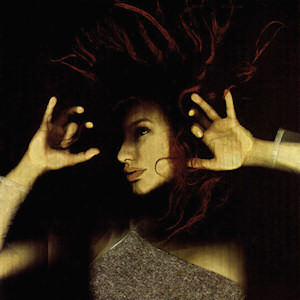 ”
”
Suddenly, Tori plugged in. After three albums that largely relied on the piano front and center, “From the Choirgirl Hotel” was a full-fledged departure. Most of the songs are full band arrangements, featuring electronic loops as well as drums, guitars, synthesizers, and of course the piano. The arrangements are complex and the production work is superb. “Choirgirl” is an album wrought with pain. Tori doesn’t shy away from the personal tragedy of her traumatic miscarriage – the songs are nakedly cathartic. You can feel the emotion released in “Spark” – “She’s convinced she could hold back a glacier, but she couldn’t keep Baby alive. Doubting if there’s a woman in there somewhere.” “Spark” is a tour de force composition and recording. Released as the album’s lead single, “Spark” builds in power and intensity as it progresses, especially during the bridge, with Tori slamming piano keys as if conjuring dead spirits, almost wailing the poetic but brutally painful lyrics like she’s in the midst of primal scream therapy. It’s an amazing opener, and much of the album is just as strong. “iieee” is another complex arrangement, relying on a heavy bass-line and a loping drum pattern beneath mystical synths and an eerily repeating vocal sample that is unsettling to hear. At one point it erupts into a heavy bridge with thrashing electric guitar and Tori’s growling: “Just say yes, you little arsonist – you’re so sure you can save every hair on my chest”. “Hotel” is another electronic marvel and complex arrangement, an aural nightmare, edgy and tormented, a woman on the edge of completely unraveling… but in the end “I’m still alive… I’m still alive”. Then there’s “Raspberry Swirl,” a brilliant concoction of danceable rhythm and densely layered vocal that achieves an attitude and sound unlike anything else Tori ever recorded. Challenging and ballsy. The quieter moments on the album are just as memorable. “Northern Lad” is a poignant lament over the slow disintegration of a relationship. “I guess you go too far when pianos try to be guitars.” The most heartrending track on the album might be “Playboy Mommy.” Opening with the melancholy tones of a Kurzweil organ, Tori sings to her lost, unborn daughter: “I’ll say it loud here by your grave… those angels can’t ever take my place.” “From the Choirgirl Hotel” is a brazenly confessional collection of songs that pierces the pain of broken relationships and personal trauma – it’s so superbly written, arranged and performed that it can only be described as a near-masterpiece. Only the ragged glam-rocker “She’s Your Cocaine” sounds out of place. Replace it with the stellar b-side “Purple People,” and you might see “Choirgirl” at #1 on this list. But regardless, “From the Choirgirl Hotel” is a remarkable achievement, sonically and emotionally, and one of the best albums of the ‘90s by any artist. Despite not having any major radio hits, it was also a huge success – peaking at #5 on the Billboard Album Charts.
1. “Boys for Pele” – 1996
Key tracks: “Caught a Lite Sneeze,” “Talula,” “Professional Widow,” “Hey Jupiter”
“Little Earthquakes” was recovery. “Pele” is the fire. “Boys for Pele” is striking back. Written and recorded in the wake of Tori’s breakup with longtime companion and collaborator Eric Rosse, “Boys for Pele” is a winding and often difficult journey. Many of the songs feature unorthodox arrangements and instrumentation. The harpsichord is used as heavily as the piano. Tori’s voice is at times as beautiful as ever, and other times it’s intentionally unhinged. Lyrically “Boys for Pele” is amazing from start to finish. The album veers from vicious anger and repudiation (“Blood Roses” –“I shaved every place that you’ve been, boy… I said I’ve shaved every place that you’ve been, yes,” and the absolutely audacious “Professional Widow – “Give me peace, love and a hard cock”.) There are still moments of vulnerability and regret (“Caught a Lite Sneeze,” Putting the Damage On,” “Doughnut Song,” the stunningly beautiful “Hey Jupiter”). There is even empathy for the “enemy” in “Not the Red Baron”. “Boys for Pele” veers into other territory as well. “Marianne,” featuring a wonderfully moving string arrangement, is a heartbreaking remembrance of a young girl who committed suicide. There’s the wickedly sinister interlude “Mr. Zebra,” where the victim is poisoned and then buried alive. The vocal arrangements are complex and bewildering at times, but wonderful – there a several sections – like on “Father Lucifer,” for instance – where there are completely different sets of lines being sung on top of one another. It’s not an album of easily digestible pop songs and it requires repeated listens to “get.” But once you do… you get it hard. “Boys for Pele” is a one-woman wrecking crew. The songs are sometimes harsh and difficult (“Professional Widow”, “In the Springtime of His Voodoo”). They are sometimes sublimely beautiful (“Horses,” “Marianne,” “Way Down”, “Hey Jupiter.”) There are also some of the most inventive lyrics of any album you’ll hear (among the finest include “Talula” and “Doughnut Song”). The album did well upon its release, debuting at #2 on the Billboard Album Charts, which remains the highest placement of Tori’s career. For an album this eccentric to hit #2 is remarkable. Her fans were willing to go on this journey because so many of them related to so much of it. While it is generally perceived as an angry album, it’s far more complex than that. It’s a carefully constructed work that follows no easy paths or logical rules. “Boys for Pele” is bold, original, and absolutely unlike anything else. Give it time, let it unfold, and you’ll be ready to jump into the fire by the end of the journey. Pele is always hungry.
* * *
Previous articles:
Support Metro Weekly’s Journalism
These are challenging times for news organizations. And yet it’s crucial we stay active and provide vital resources and information to both our local readers and the world. So won’t you please take a moment and consider supporting Metro Weekly with a membership? For as little as $5 a month, you can help ensure Metro Weekly magazine and MetroWeekly.com remain free, viable resources as we provide the best, most diverse, culturally-resonant LGBTQ coverage in both the D.C. region and around the world. Memberships come with exclusive perks and discounts, your own personal digital delivery of each week’s magazine (and an archive), access to our Member's Lounge when it launches this fall, and exclusive members-only items like Metro Weekly Membership Mugs and Tote Bags! Check out all our membership levels here and please join us today!

